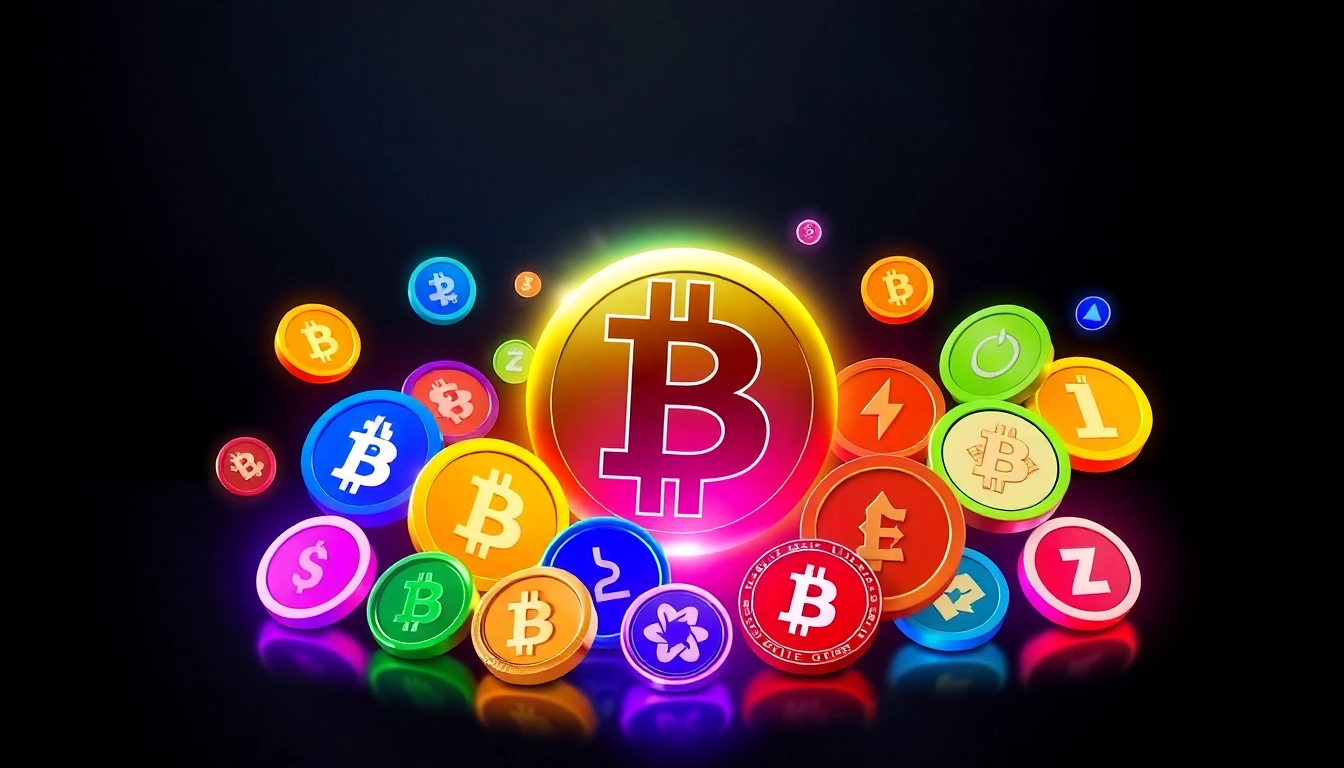Introduction to Altcoins and Their Role in Crypto Evolution
The cryptocurrency ecosystem has expanded exponentially since the inception of Bitcoin, with a diverse array of digital assets influencing financial markets worldwide. Among these, altcoins stand out as the most significant category of alternative cryptocurrencies. These digital assets, which encompass a wide variety of tokens and coins developed beyond Bitcoin, play a crucial role in shaping the future of decentralized finance and blockchain innovation.
Understanding what altcoins are and how they differ from Bitcoin is essential for investors, developers, and enthusiasts aiming to navigate the complex landscape of digital assets. While Bitcoin remains the pioneering and most recognized cryptocurrency, altcoins have introduced new functionalities, improved blockchain architectures, and innovative use cases that fuel the ongoing evolution of the crypto market. Their rapid growth and diversification have prompted a paradigm shift—moving from a Bitcoin-centric ecosystem to a dynamic, multi-layered universe of digital coins.
Key Types of Altcoins and Investment Strategies
Popular Altcoin Categories: Utility, Security, and Meme Coins
Altcoins can generally be classified into three primary categories, each serving distinct purposes within the blockchain space:
- Utility Coins: These tokens grant access to a specific product or service within a blockchain platform. Examples include Ethereum’s ETH, which powers decentralized applications (dApps), and Binance Coin (BNB), used within Binance’s ecosystem.
- Security Coins: These digital assets function as investments, often representing ownership or stake in a project, akin to traditional securities. They are regulated in various jurisdictions and typically require compliance with securities laws.
- Meme Coins: Originating from internet culture, these coins are often created as a joke or meme but can gain significant popularity and market value, such as Dogecoin (DOGE) and Shiba Inu (SHIB). They exemplify the influence of community and social media in crypto markets.
Analyzing Top Performers and Hidden Gems
While Bitcoin and Ethereum dominate the market, many altcoins are emerging as potential high-yield investments. Top performers such as Solana (SOL), Avalanche (AVAX), and Polygon (MATIC) have demonstrated significant growth due to technological innovations and expanding ecosystems. However, savvy investors also seek hidden gems—less established altcoins with robust fundamentals, active developer communities, and innovative use cases that could surge in value during upcoming market cycles.
Risk-Reward Profile of Altcoin Investing
All investments carry risk, but altcoins tend to be particularly volatile due to low liquidity, limited market depth, and regulatory uncertainties. The potential rewards are high, with some altcoins experiencing 10x or more returns in short periods. Nonetheless, investors must balance this upside with risks like scams, rug pulls, or project failures. A diversified approach combined with thorough project analysis is crucial to capitalize on altcoin opportunities while managing downside risks.
Evaluating Altcoin Projects and Longevity
Roadmaps, Use Cases, and Technological Innovations
Assessing an altcoin’s potential for long-term success begins with examining its roadmap, technological foundation, and real-world applicability. Projects with clear development milestones, innovative features such as scalability solutions, or unique use cases — like decentralized identity or IoT integrations — are more likely to withstand market volatility. For example, Layer 2 scaling solutions like Polygon address Ethereum’s congestion issues, making them promising candidates for sustained growth.
Community Engagement and Developer Support
Active communities and strong developer support are vital indicators of an altcoin’s vitality. Open-source projects with frequent updates, transparent governance, and community-driven initiatives tend to adapt better to market changes. Platforms like GitHub reveal the level of developer activity, while social media engagement reflects community sentiment and grassroots support.
Indicators of Sustainable Growth and Potential Pitfalls
Sustainable growth is often signaled by increasing transaction volume, steady user adoption, and partnerships with reputable entities. Conversely, pitfalls include project centralization, overhyped marketing, and lack of transparency. Investors need to conduct due diligence—evaluating whitepapers, market cap trends, and team backgrounds—to avoid falling prey to scams or pump-and-dump schemes.
Navigating the Market: Buying, Selling, and Securing Altcoins
Choosing the Right Exchanges and Wallets
The first step in altcoin investment is selecting reputable exchanges such as Binance, Coinbase, or Kraken. Prioritize platforms with high liquidity, security measures, and user-friendly interfaces. As for storage, hardware wallets (cold storage) provide enhanced security, especially for holding large amounts or long-term holdings, while hot wallets are suitable for active trading.
Timing the Market and FOMO Management
Market timing remains challenging due to crypto’s volatility. Strategies such as dollar-cost averaging (DCA), setting stop-loss orders, and staying informed on market indicators can help mitigate emotional decision-making driven by FOMO (Fear of Missing Out). Keeping a long-term perspective anchors investors during turbulent phases.
Strategies for Long-Term Holders and Active Traders
Long-term investors should focus on projects with strong fundamentals and hold through market swings, while active traders capitalize on technical analysis, news catalysts, and market cycles to profit from short-term price movements. Combining both approaches can diversify risk and maximize returns in the dynamic altcoin landscape.
Future Outlook: The Next Wave of Altcoin Innovations
Emerging Trends and Technological Breakthroughs
The future of altcoins is intertwined with technological advancements like interoperability protocols, decentralized finance (DeFi) innovations, and NFT integrations. Projects leveraging zero-knowledge proofs, Layer 2 scaling, and cross-chain bridges are poised to redefine how digital assets interact and expand their utilities.
Regulatory Impact and Global Adoption
Regulatory clarity will significantly influence the proliferation of altcoins. Countries establishing clear frameworks may foster mainstream adoption, while restrictive policies could dampen innovation. Global acceptance depends on factors such as compliance, security, and the perception of blockchain’s potential to enhance transparency and financial inclusion.
How Altcoins Will Drive the Next Phase of Cryptocurrency Adoption
Altcoins are expected to accelerate mainstream crypto use by offering diverse solutions tailored to specific industries, like supply chain management, gaming, and digital identity. Their ability to solve real-world problems and facilitate cross-border transactions will catalyze broader societal adoption, transforming financial landscapes worldwide.
